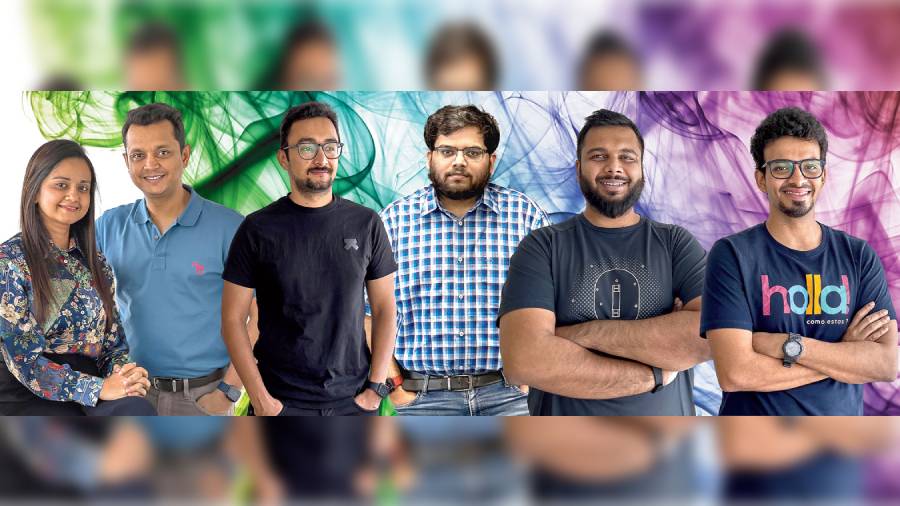A bold storm spread across the globe when Steve Jobs, in 2007, introduced the iPhone. It was seen by a handful of critics as a localised storm that will soon blow over. Instead, the year after came the App Store, which changed the course of smartphones forever. Initially, there were more than 500 applications, including games, educational programmes, mobile commerce and productivity tools, but over the years the number has expanded beyond everyone’s imagination. It’s not just about numbers, the quality of these apps remains uncompromised. Jobs said in 2007: “Apple is going to reinvent the phone.” It did. Since the launch of the App Store in 2008, developers have earned more than $260 billion. Many of these developers are in India but their work is being enjoyed by people around the world. The company opened its App Accelerator in Bangalore in 2017 to offer specialised support for developers, including tools and best practices to hone their skills and transform the design, quality and performance of their apps on the iOS platform.The Telegraph travelled to Bangalore to meet five Indian developers who can inspire future generations.
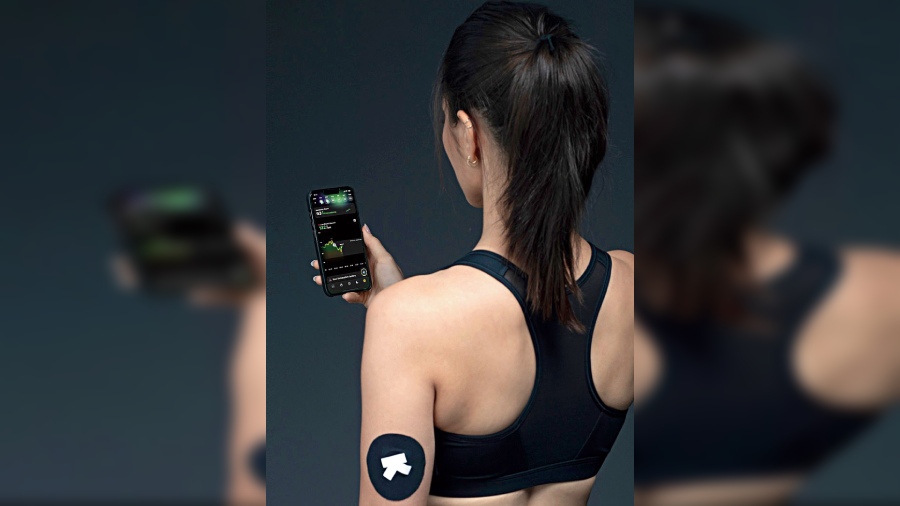
The bio-sensor from Ultrahuman
Ultrahuman
Powering the show: Vatsal Singhal and Mohit Kumar
A patch of dedication is being worn by those who take fitness as seriously as planning out life. In India’s Silicon Valley has been born a cutting-edge technology that has the potential to upend the fitness market globally. First steps have been taken and the response to Ultrahuman has been nothing short of phenomenal.
The brainchild of Vatsal Singhal and Mohit Kumar, Ultrahuman has come up with a bio-wearable that fitness enthusiasts are wearing, provided, of course, they have an invite, which has become the most wanted prize at the moment.
The bio-sensor contains an Abbott CGM or continuous glucose monitoring system, which comes with an applicator. The best part is its do-it-yourself aspect. There is a microfilament which is hair-like. It penetrates the skin and reads from the interstitial tissue and not the blood; it, in fact, just about penetrates the skin.
“Once set, it continuously measures your glucose from something called the interstitial fluid, which is present right beneath your skin. And that’s like a proxy to blood glucose. The best part is that since you get real-time data, you have a true sense of your body. If you do a prick, you have data from one point of time of the day. A single blood glucose point is meaningless and does not tell you much about your lifestyle,” says Singhal.
Having a sensor in the body is cyborg-level achievement but in a world where “closing rings” has become standard practice, this is not way off. The bio-sensor offers a real-time view of your metabolism.
“At the moment, fitness is a static concept and opaque in nature. If you make any changes to your lifestyle, you will see an impact after a few weeks or months in way of weight. But health is something instantaneous. If you decide to eat healthy, it improves you body in some way but how do you see that response in real time. Health is something that’s affected by your lifestyle across 24 hours. It can’t be about spending one hour at a gym. Also a large part of health is what food you eat and not just activity. But people when they want to lose weight, they start with activity. If you see, there are no wearables for food. We are bringing objectivity to food. Is the food working for you or not is what we tell you,” says Singhal.
The sensor keeps sending data which go towards a metabolic score that’s counted out of 100. The user wakes up in the morning and needs to optimise the score. It’s as straightforward as that.
“You wake up in the morning and have a nice breakfast, a healthy breakfast. Your scores will remain high and if you eat improper or try to cheat, like having more carbs or biryani, your glucose might go out of zone and your metabolic score will go for a toss. You can’t game the system because it’s on your body 24x7. And that’s why people love it because it is passively monitoring you. You don’t have to log anything. As a user, if I ask you to put an effort, you may or may not do it. But since this is passively monitoring you, it knows the state of your body. If you improve, you will see the score changing.”
Something we often forget is the diet that works for one person may not work for everyone; not even biological twins. “Everyone has a different diet. If you have more muscle mass, your ability to dispose off glucose might be very different. Your gut, genes, stress levels also play a role.”
Singhal offers an example. On the day we met, he had for breakfast vermicelli and eggs. The reading was off. To adjust, he had to reduce the portion of vermicelli and increase the amount of eggs. The app also gives the user ways to optimise that score. “When you use the app, you get the top and bottom zones. I know that if I continue eating gobi paratha in the existing state and without any activity after it, it will affect my metabolic health over time and affect my ability to lose fat. If I have to eat it, I have to optimise it. Either I do strength training or walk after eating it. You get a very objective view of your lifestyle.”
The sensor that’s provided works for 15 days. The Ultrahuman team keeps the supply of sensors going. Users can opt for a three-month or annual pack and the company is working on a subscription model.
At first, the founders were hesitant launching the product from India because at Rs 1.1 lakh annually, it’s not inexpensive. What you get is a medical-grade device that’s FDA approved. But the response has been overwhelming and interest in the product keeps growing exponentially.
The early adopters have been folks in the tech community and they are inspiring those around them to use it. In a couple of weeks, Ultrahuman will be in the UAE and in a few months, in the US.
Over the months, the team at Ultrahuman has been helped a lot by Apple’s App Accelerator in Bangalore. Also, it helps that most Ultrahuman users are on the Apple platform.
“We obviously learn a lot from Apple, which has a beautiful ecosystem. It has a beautiful design. The Accelerator has been giving us feedback on the product, the design philosophy, things that are unnecessary,” says Singhal who previously did a great job with Mohit as the founders of a hyper-local logistics service provider called Runnr.
After Runnr was acquired by Zomato in 2017, Mohit went to a training camp in Thailand while Vatsal spent time with athletes. “You will imagine that they train a lot. Not true. Many athletes don’t spend hours in the gym. They are precise. They may train for one hour in the morning and then one hour in the evening. But they have precision,” says Vatsal.
A lot of coaches are using the platform to train athletes. “They put the device on them and the coaches get a dashboard. They can see if the athletes are maintaining a routine.”
As Ultrahuman continues to scale, Vatsal tells us that one category of users may choose to avoid the device — those with chronic diabetes. “A diabetic needs to work with a doctor and their medicines need to be modulated. They should avoid it unless they have access to a doctor. We don’t recommend it. We are into healthy to pre-diabetic zone. It’s built for optimising longevity and performance.”
Ultrahuman is also the story of two friends who have known each for a very long time. They continue to work together, moving from one successful idea to another. They may have hit a jackpot with Ultrahuman, which is set for the international market.
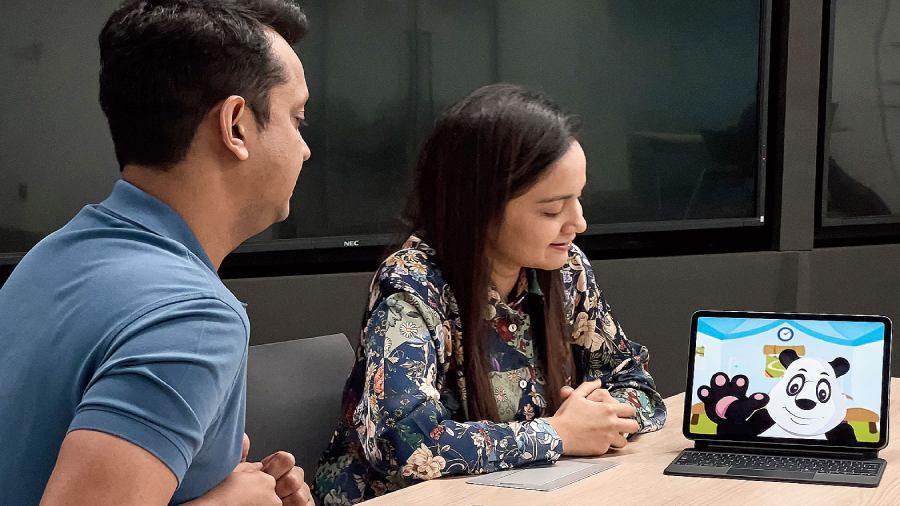
Kiddopia has been a huge hit in the US
Kiddopia
Powering the show: Anshu and Anupam Dhanuka
There’s no handbook for parenting, something we realised more than ever before during the pandemic. One equation that has changed in the last two years is screen time for children, which has obviously increased. Making this unwanted reality bearable is the app Kiddopia, which has been the number two most popular kids app in the US for some time.
Kiddopia is not an app with a single focus. It fires on many engines. Think of it like a market where you can buy vegetables, spices, poultry…. Similarly, under Kiddopia there is a never-ending amount of content tailored for preschoolers or ages two to six.
Behind the app are Anshu and Anupam Dhanuka, both based out of Mumbai, guiding a team of 60 people. Whatever you see on Kiddopia is original content, designed, programmed and marketed by the team in Mumbai and they have done a very good job. Celebrities Jessica Grose and Chrissy Teigen have spoken about the merits of Kiddopia, which has had 14 million downloads, 350,000-plus active subscribers and a 4.4 rating on the App Store. That’s quite some achievement for the husband-wife duo.
Kiddopia, in many ways, mirrors the many reasons why Apple introduced the iPhone and the iPad in the first place — seamless access to what’s important without any hindrance from advertisements or unnecessary payments.
“When the iPad was launched (in 2010), our daughter was only 10 months old and we saw how easily she took to the iPad. That’s when we realised that the iPad is a great tool for kids learning. We wanted to put out content that was engaging, educational, and fun. All blended into one. It needs to actively engage kids who are otherwise watching TV and consuming YouTube,” says Anshu while showing us a demo of the app.
The journey started in 2012 when content rolled in quick, addressing areas like creativity, role playing and ABCs. “For about five-six years we rolled out content and tried different business models and tried to understand what parents and kids want. Based on all this, we realised what we needed to come up with is a product which when parents discover it, they download it, ensuring it caters to the needs of a child. And it becomes a one-stop shop. Once you download it, you don’t have to worry about anything else. If a kid is bored with one kind of content, it’s easy to move to something different within the app. We keep adding content. We try to move kids away from the passive consumption that takes place on YouTube and TV, and make it more interactive. That’s when learning really happens,” says Anupam.
Before the two got married in 2006, Anupam was studying computer science at Carnegie Mellon and had worked in the US for four years while Anshu studied finance in Nottingham. “We came back to India, met and got married. We were early movers when the iPhone and iPad came out. We had the technical knowhow,” says Anupam. Being big on gaming her entire life, it was easy for Anshu to gamify content. “As a mother I had other emotions at play and there was a natural inclination to teach,” she says.
Though the product is also available on Android, the duo keep seeing more action on Apple platforms. “Our success in the US is driven more by the fact that many kids have their own iPads. Almost every family will get their child an iPad. In India that’s picking up,” says Anupam. Things are looking up in India where the product comes at an annual price of Rs 499.
Apple’s help comes especially in the way of being the best ecosystem in the world. “Apple as an ecosystem has high-quality devices… the brand that Apple brings helps us. Apple is the first mover in the AR space and we added an AR section in the app,” says Anupam.
The success of Kiddopia is making the husband-wife duo look at new geographies like Europe, China, Japan and South America. In fact, the product from Paper Boat Apps has become so big that two years ago the company was acquired by Nazara Technologies, India’s first gaming company to go public.
“A lot of the content is inspired by observing kids. I used to bake a lot with my daughter. That made us add a baking game in the app. We have a lot of content that teaches empathy, like an animal that’s not feeling well and needs help. Kids love that,” says Anupam. By the way, their daughter still vets the content that goes into the app.
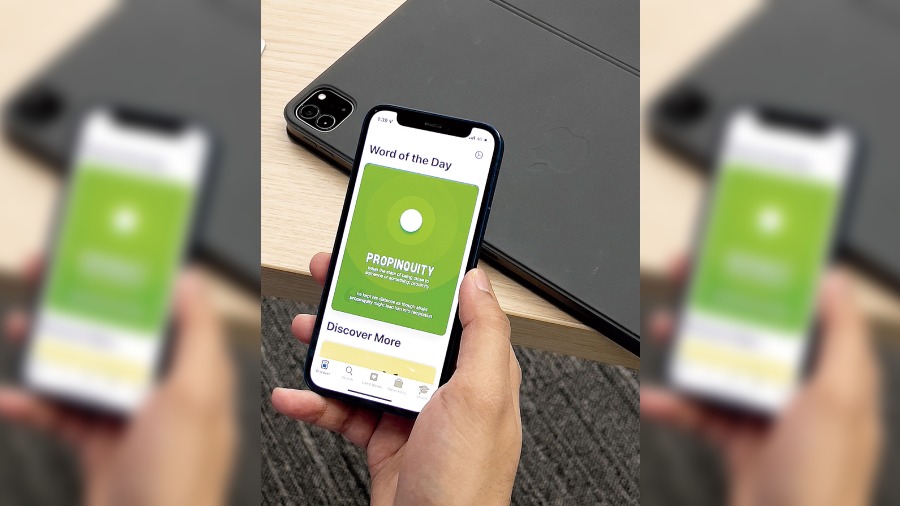
The LookUp app being demoed
LookUp
Powering the show: Vidit Bhargava
As Vidit Bhargava delved quietly into his bento box for lunch, he admired the waterbody around which a typical Bangalore day was unfolding. He was attentive, engrossed, enthralled, immersed and intrigued. For a man who has one of the best-looking word-learning apps in the world, it is but natural to mull over words.
Bhargava is one of those mild-mannered app developers who allows his work do the talking. LookUp redefines how we learn and use words. The app has the design philosophy the Apple platform is known for — highly focussed but at the same time free of all the pitfalls Android is known for, like advertisements and in-app purchases. There is none of that. Either you punch in a word and get sucked into a whirlpool of amazement or while keying in a document, you look up a word via LookUp.
The Delhi born and brought up app developer is symbolic of the way Indian programmers have managed to reach a global audience, thanks to the Apple App Accelerator in Bangalore.
“I want to build apps that are unhindered by ads, monetisation concerns/tricks. I don’t want to build a free app. That is not a great experience. I want to work on my terms. The iOS is the most sustainable way to make apps. It matches my ethos as a developer. There are no data collection practices. There is an ethical connect with Apple,” says Bhargava while explaining how his app works.
The idea for the app stems from personal experience. “In high school I had difficulty learning English and most dictionaries were intimidating to set up and look up words. When I was writing, I used to look up multiple areas to find definitions. That’s when I came upon the idea for LookUp, the idea is to make it simple to learn words. It’s easy, non-intimidating and as soon as you launch the app, you can start looking for words. No ads. No sign up,” he says.
His first brush with computers was in school. Being from a middle-class family, he and his elder brother shared everything, including the computer. “My brother is my inspiration; he is four years elder to me. He used to go to school and get an HTML class and would come back and practise on the computer. Since I was also there, I was learning with him. He introduced me to computers. I had a Windows 95 machine with 2GB HDD. It was massive at that point. When we played games, we played together. When we studied, we studied together.”

File picture of Apple co-founder Steve Jobs introducing the iPhone at Macworld on January 9, 2007 in San Francisco
In 2005, his life changed, thanks to his brother, who was attending a school competition where he saw an iMac. “He was suddenly face to face with a computer that was well designed, no viruses…. He was fascinated. I started seeing Steve Jobs’s keynote speech. When he introduced the iPhone in 2007, it was a game-changer. For a 12-year-old it was out of the world and I wanted to develop something on the iPhone. Dad got his first iPhone — the iPhone 3G. We soon downloaded Xcode (used to develop software for the Apple platform) and played with it. In a couple of years, we were building apps.”
Perseverance paid off when he was chosen WWDC scholar in 2016 where he met the man many techies dream of interacting with — Craig Federighi, Apple’s senior vice-president of software engineering.
Helping LookUp succeed is the assistance extended by Oxford University Press. All the words you find in the dictionary can be found here. “We have partnered with the Complete Oxford Dictionary… you have the entire dictionary. Apart from the Oxford dictionary, we also show Wikipedia results and images. If there is a relevant image to a word, it’s going to be there. One of my favourite words is ‘onomatopoeia’. What better way to learn about the word than start with an image. You get the origin of the word, the translation in 20-25 languages (Indian languages include Hindi, Urdu and Marathi).”
Vidit is now ready for a life beyond LookUp. His next app, which is coming in May, sorts out time zones. Many people have meetings across time zones and it’s a mess how PST, ET, GMT, IST and so on get converted online. It also shows how invested Vidit is with app development; it’s his life.
“This is my job. I come from a business family but I always wanted to do something on my own without putting my ethics at stake. I won’t be doing anything else in my life but work on apps.”
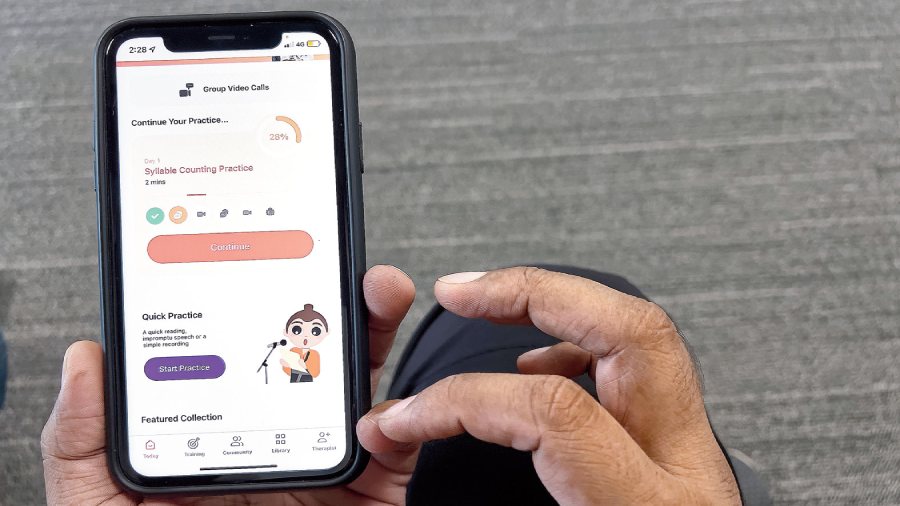
The app Stamurai in action
Stamurai
Powering the show: Meet Singhal, Anshul Agarwal and Harsh Tyagi
Stutterers have a tough life. A chunk of text that may take a fluent person a minute to read, may end up taking five-10 minutes for a stutterer. Some people — like US President Joe Biden — are able to manage the issue but many can’t. Biden had a tough time in school and in interviews he has recollected a moment where “anger, rage and humiliation” had taken possession of him.
Hope comes in the form of an app developed by the trio of Meet Singhal, Anshul Agarwal and Harsh Tyagi. Called Stamurai, it has had over two lakh downloads, of which 60,000 are from India.
“My co-founder Meet and I both stutter since childhood and it had a big impact on our lives — school, college, career choices, relationships and what not. Three years ago, Meet was helping me with my stuttering and then we got this idea to codify the whole experience and make speech therapy affordable and accessible for everyone. We teamed up with our friend Harsh and started Stamurai,” says Anshul. The three of them are IIT-Delhi graduates. Harsh and Anshul graduated in 2011 while Meet in 2013.
The big problem in India is that there are only 4,000 registered speech therapists for 60 million people who need help. “The gap is huge and we are trying to meet that gap. We provide therapy at one-tenth the cost. We estimate that we have saved around $5m-10m in therapy costs till now,” says Anshul who was previously a founding team member of Curofy, a networking app for doctors and it got acquired in 2018.
“Stuttering affects both speech and emotion with the latter causing 90 per cent of the problems. In Stamurai we have both fluency exercises as well as tools to practise these exercises. There are 14 techniques and then we have tools like counselling. When you download the app, you are asked a few questions and based on the answers we create a training programming day by day. Ultimately, stuttering is something that cannot be cured but it can be managed. We handhold the whole way,” says Anshul, who is based in Delhi.
The app has evolved a lot from the original version. Now, there are three therapists on the team and they have consultants in the US and India. The team is always working on the customisation aspect, so they keep improving their algorithms along with adding new exercises, videos and tools.
A big help has come from the App Accelerator. “For example, our full-screen video is an App Accelerator idea; earlier it used to be the 16:9 video. It now looks much better. Whatever UI you see, a lot of the credit goes to Apple. They used to come on call with us and then we used to make changes. Also, they have the latest technology. The great thing about Apple is that the feedback route is short. Then they kept giving us ideas. The next thing we will work upon is an Apple Watch app. It’s in the pipeline.”
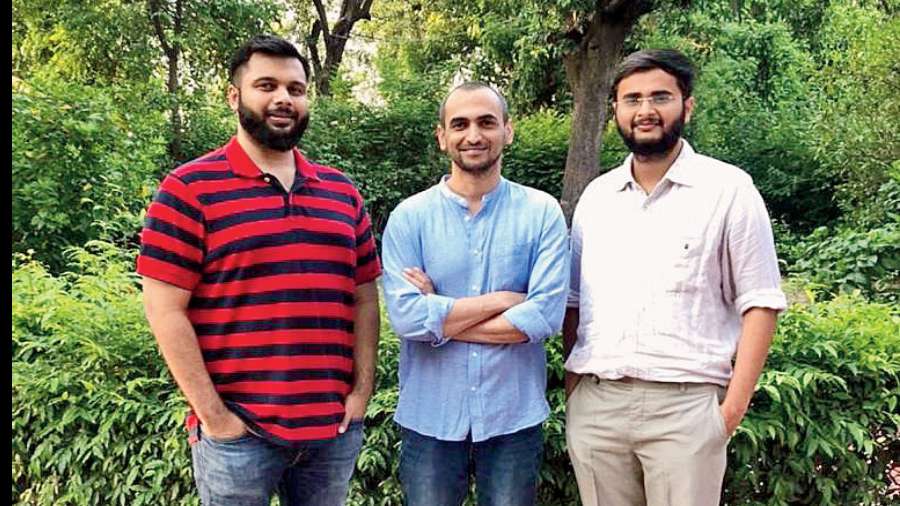
The founders of Stamurai (left to right) Anshul Agarwal, Harsh Tyagi and Meet Singhal
A peculiarity to the issue is that stutterers don’t stutter when they are alone. “We are trying to mimic a situation where somebody is staring at you — so we create a VR-like experience where it feels like an audience is observing you while you speak.
“For the emotional aspect, the app has CBT exercises or cognitive behavioural therapy that works on your thoughts… to restructure them. For example, if you have the fear of giving presentations, you try to reason with those thoughts. We ask things like ‘What is the worst thing that could happen? How likely is that scenario?’ It’s one of the exercises that work on the emotion part,” says Anshul.
The trio doesn’t want to stop there; they want to cover speech delay, autism and ADHD. “When we were in college, technology wasn’t that developed to have apps like this. Such an app would have been a godsend for us.”
Another uniqueness comes in the form of a community of users, which acts like a self-help group and also as a safe space. “You can now apply these techniques on calls with people who stutter and then apply the techniques in the real world. We have users from all over the world, from all time zones.”
Team Stamurai keeps hearing how the app has changed lives and there are plenty of positive reviews on the App Store. Priced Rs 3,000 annually, Stamurai is a full-time job for Anshul. “As a founder you have ups and downs but you feel good that you are helping people.”

A moment from In My Shadow
In My Shadow
Powering the show: Nakul Verma
The long shadows cast on the wall at times keep us awake, as we think of what could have been. Bella, 25, has fallen out with her family and things get worse when she receives a text message from her father after three years. You have to help her see beyond obvious perceptions.
The video game In My Shadow is a rare title that will have you hooked from the get-go. The imaginative puzzle from Playbae lets you play with shadows, which can be tricky. Behind the small indie studio from Gurgaon is Nakul Verma, who is constantly thinking beyond the obvious.
“I have a small team and I collaborate with people from all around the world. We want to create innovative experiences. The vision is to push the boundaries of imagination in video games. I am a game programmer but I like to go beyond coding. Even in childhood I was fascinated by gadgets, breaking them and then getting it all back together,” says the 29-year-old game developer from Gurgaon and the man running the show at Playbae.
His knack for breaking and fixing things naturally made him opt for electronics in college. “But I wanted to get into gaming. Eventually I realised that electronics has nothing to do with gaming. This is when I learned game programming. After college I got a good placement as data analyst. Eventually I quit that and got into gaming full-time in 2015, though I had been making games since 2013,” says the man who is a Doom and Half-Life fan.
The problem with the Indian game development scene at that time was that most of it was service-based and there is very little in way of original IPs. Nakul is the kind of guy who likes to create, crazy off-beat titles. The idea for his award-winning game came during a walk on the terrace. “It was just another night and I was on the terrace. There was an optical illusion created by shadows. I was standing on my terrace while the shadow of a very big container kept on another terrace was casted very small immediately next to mine. I could imagine my shadow walking on top of the container’s shadow. I thought it was cool if I could create a game in which I could walk on shadows. That’s the inception,” he says.
In 2018, he applied for the India GDC (Game Developer Conference) with his prototype. “I had no idea about it but I applied because of one of my friends. I was surprised to win an award for the upcoming game of the year. Back then the game was called ‘In The Shadows’. I realised I should explore more. I got a scholarship for the real GDC but despite the scholarship, I had to pay quite a bit. I managed to go to San Francisco where everything changed for me. There I met a lot of inspiring game developers. I learned about their struggles, stories and passion. I strongly believe that indie games are art. I came back and started working full-time on the shadow concept in 2019.”
Last year, the game released on Steam, App Store, PlayStation, Xbox and Switch but not on Android. Apple has an interesting role to play in Nakul’s life. “Then I started working on the game, I wanted to create a premium title — no ads or interruptions. Apple came to my mind. The dream was to get featured as Game of the Day on iOS. When I started Apple Arcade was about to arrive, so I went with iOS. Initially I got in touch with the Apple team at GDC San Francisco. They loved the game and offered a lot of feedback. After the Steam release, I got in touch with Apple again and they introduced me to an indie games programme. That helped me with a lot of feedback. They get a lot of experts from around the world and spent a lot of time on me. Ultimately this game got featured as Game of the Day.”
The support from the gaming community in India has been immense and he was recently selected as Bafta Breakthrough. At the moment he is working on another version of the game, which will be more of a casual experience. “It will be more accessible to the average mobile gamer who doesn’t have the time to play hardcore games but does enjoy a clever mechanic,” says Nakul.
